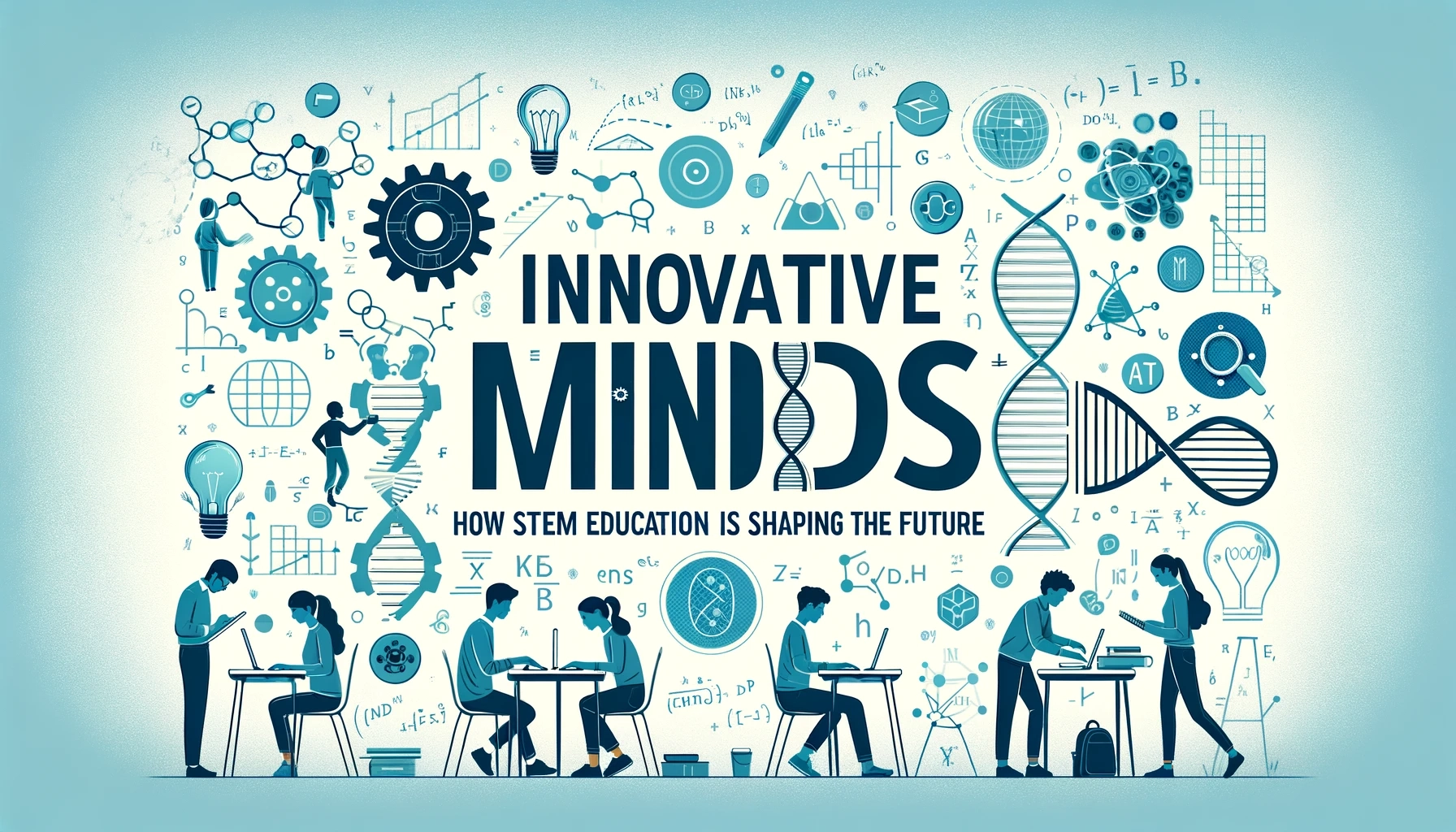Education System
INNOVATIVE MINDS: HOW STEM EDUCATION IS SHAPING THE FUTURE


The rapid advancement in Science, Technology, Engineering, and Mathematics (STEM) is changing our world at an unparalleled pace. Their importance in every phase of modern life is unassailable. We see this in revolutionary technological innovations. It is also evident in groundbreaking medical discoveries. STEM education is a wave that will lead the next generation of innovators, problem-solvers, and leaders. It’s essential for the future. This paper addresses how STEM education has been pointing us in the direction of the future and why, concerning matters of personal success and social development.
IMPORTANCE OF STEM EDUCATION
Fostering Critical Thinking and Problem Solving:
STEM education fosters an analytical mindset. It emphasizes problem-solving and applied learning. These competencies are considered indispensable not only for STEM careers but for other occupations as well. They are required to find solutions to problems that are highly demanding, complicated, and advanced.
Driving Innovation and Economic Growth:
Nations that invest in STEM education are likely to become leaders in innovation and economic growth. Supplying a STEM-trained workforce can advance technology, creating better-paying jobs and global competitiveness.
Meeting Global Challenges
From climate change to public health, many of the world’s most critical problems will need STEM-based solutions. Education in a STEM discipline equips students to create renewable sources of energy. They can push the boundaries of medical discovery. These graduates also design new technologies that will improve human life.
Fostering Lifelong Learning
The fields under STEM are ever-evolving, demanding that individuals learn and relearn. STEM education makes one fall in love with discoveries. It teaches one to have the mindset of a lifelong learner. This mindset is very much needed in an evolving job market.
CRITICAL COMPONENTS OF EFFECTIVE STEM EDUCATION
Interdisciplinary:
The essence of STEM education is incorporating science, technology, engineering, and mathematics into one uniform learning paradigm. The interdisciplinary approach encourages students to see connections in these areas. They can then use this amalgamated knowledge to solve real, complex issues.
Hands-on Learning:
Experiential learning is the rockbed of STEM education. Experiential learning in the form of laboratory experiments, engineering projects, and coding exercises—all these are provided to students so that they get practical experience in implementing theoretical concepts.
Inquiry-based Learning:
Being a student able to ask questions and, through experiments and research, understand how you go about finding answers goes further in the aspect of conceptualization. This aspect brings about curiosity and independence in thought; these are the skills required for future innovators. Technology in classrooms—coding software, robotic kits, virtual laboratories—is one modern way. Such technology may be helpful for students to learn more interactively. The familiarity of this tool keeps the student updated, and in this way, they can meet the technology requirements in the job market.
Teamwork and Collaboration:
STEM projects, for the most part, are collaborative by design. They call for teamwork. Students learn how to lead and communicate inside a group. Real-world STEM careers almost beg for collaboration for success.
THE FUTURE OF STEM EDUCATION
The world is yet to see the full impact of STEM education over time. With the increased acceleration of artificial intelligence, biotechnology, and renewable energy, the need for human resources with backgrounds in STEM will grow. This, thus, calls for the preparation of students to meet these needs through a continued commitment to innovative, inclusive, and dynamic educational practice. This means that institutions must catch up with such trends and introduce changes in the curricula to pass on to future leaders, thinkers, and creators who will instigate progression and innovation.
CONCLUSION
STEM education is an excellent development tool, personally and socially. STEM education can make the students think critically, inject innovation, and mold them into being a workforce suitable for the days ahead—probably the best opportunity to shape the world into a better place. Advancement and promotion in learning STEM guarantee that there will be enough discovery, innovation, and opportunity in the future.
